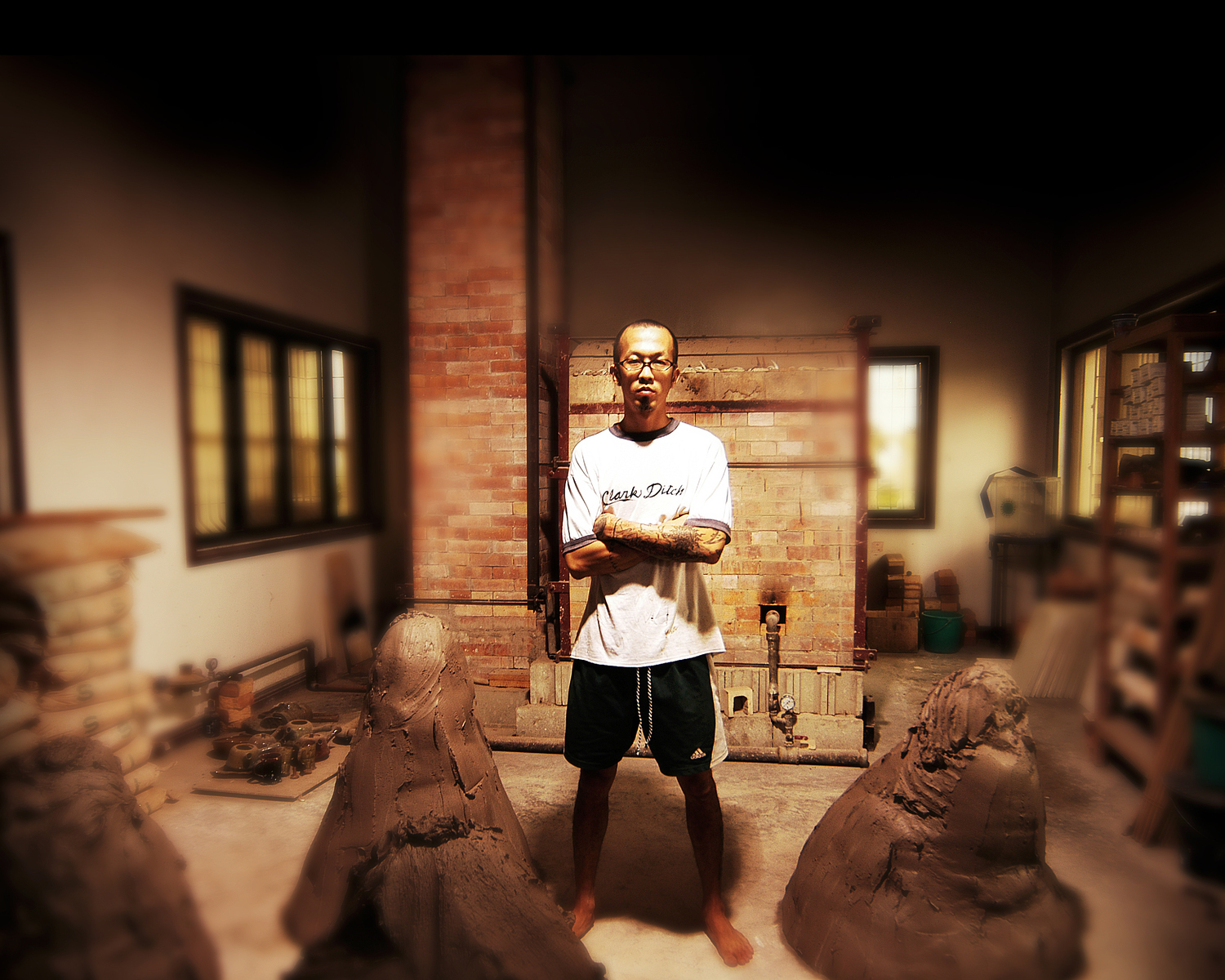"Hadrian Mendoza at the Philippine Center" Newstar Philippines Vol. 40 December 2005 by Robert P. DeTagle
Hadrian Mendoza will exhibit 50 pieces for his ceramic exhibit at the Philippine Center from November 7 to 18, highlighted by his exploration of various glazes and by inclusion of his Bulol series sculpture.
Mendoza has worked in or traveled to the Philippines since 1997, after college in Virginia and studies at the Corcoran School of Arts in Washington DC, where he was awarded the Anne and Arnold Abramson award for Excellence in Ceramics. The 30-year-old is particularly excited about this show.
He told this writer, "I have prepared about eight months for this and the works have changed a lot in that time frame. My ceramic works use all Philippine-based materials of clay and ash."
The ashes can be from ipil or pine trees or sugarcane or from Mount Pinatubo, even from the wood burned in bakeries in the Philippines.
"I made some glazes from pine trees that were destroyed by storms and strewn along Manila's South Super Highway," he recalls, yielding "light green- not celadon- but different shades of green."
The result is a collection of brilliant ceramics that incorporate his image of forms indigenous to the Philippines. His glazes will lead to unique pieces: "I have used combinations of glazes over and over again, and the results are always different."
He has also included two works from a series, called "Bulol," based on the Igorot rice god.
"There are many versions of Filipino idols and gods, and all have morphed in the hands of their creators, each new one evolving into artworks of a modern era," Mendoza says.
Mendoza decided to continue the path of pottery after apprenticing with Jon Pettyjohn. They founded the Pettyjohn-Mendoza Pottery School in Manila in lat 1999. He teaches at the Makiling School of Arts in Laguna. With his frequent forays to other Asian countries, he has sought to further research and explore indigenous forms that he seeks to re-imagine in his striking works.
